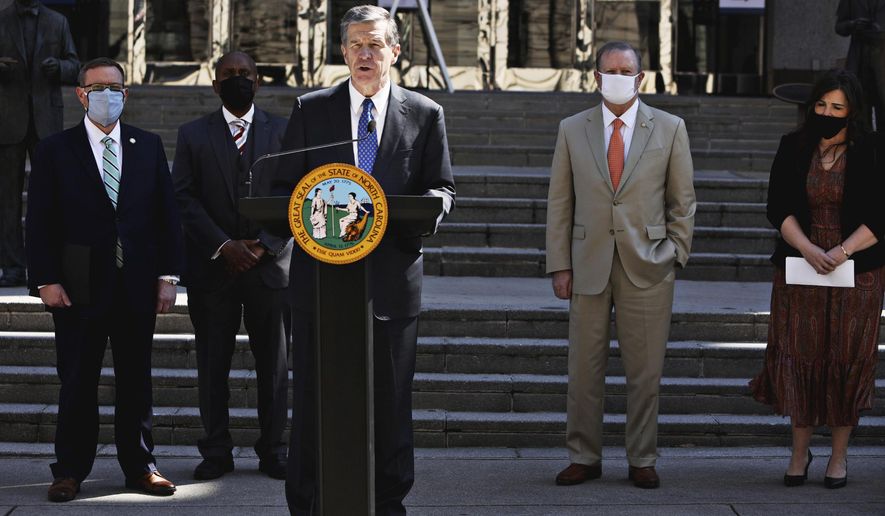RALEIGH, N.C. (AP) - North Carolina elected leaders finalized a directive on Thursday that will put more K-12 students in classrooms five days a week by telling all districts to offer in-person instruction no later than early April.
The order was contained in legislation that Gov. Roy Cooper signed into law hours after the House approved the bill unanimously. The Senate gave it a similar vote on Wednesday. The Democratic governor and Republican legislators negotiated the compromise legislation, which resolved issues that prompted Cooper to veto a previous school-reopening measure nearly two weeks ago.
Nearly all of the state’s 115 local districts already have some in-person instruction. But GOP lawmakers were unhappy with the pace at which schools were bringing the state’s nearly 1.5 million students back to class as the COVID-19 pandemic eased and data showed low transmission among young people.
They said students who first began learning online in March 2020 were suffering academically and needed to return to class. Parents and local school leaders have lobbied lawmakers to bring back children.
“The General Assembly has made it our No. 1 priority” to get students back in school, Rep. John Torbett, a Gaston County Republican, said before the House’s 119-0 vote. “For many families, there’s still much work to do to return to in-person full time.”
Under the new legislation, a district’s K-5 schools must provide instruction to all students without physical social distancing limits, or what is known as “Plan A.” This essentially means students will have classroom instruction five days a week. School boards are directed to open middle and high schools either using Plan A, or they can keep requiring at least 6 feet (1.8 meters) of distance between students through “Plan B.” The “Plan B” policy largely limits in-person classes to a couple of days a week because of building space restrictions.
Until now, state school guidance had allowed K-5 schools to use Plan A or Plan B, and grades 6-12 to follow Plan B. Schools still must offer virtual-only learning to families who still want it.
Middle and high schools that move to Plan B under the new legislation must notify state health officials and participate in a COVID-19 data collection effort with Duke University. In a legislative concession to Cooper, the governor also can order school buildings closed in an individual district if coronavirus cases worsen there.
“Getting students back into the classroom safely is a shared priority, and this agreement will move more students to in-person instruction while retaining the ability to respond to local emergencies,” Cooper said late Thursday after announcing that he had signed the bill.
While districts now have 21 days from the bill’s enactment to comply, local education leaders can make changes immediately if they wish.
The directive contrasts with Cooper administration policy that for months opposed allowing older students in class without being 6 feet apart, citing CDC guidance. Faulting the bill, the North Carolina Association of Educators noted its departure from the CDC’s recommendations. Teachers have been able to receive vaccinations since last month.
But Cooper on said Wednesday his administration’s top health leaders can support allowing middle and high schools to convene under Plan A in a few weeks given the state’s improving COVID-19 case trends.
Legislators from both parties and Cooper held a rare joint news conference on Wednesday to announce the compromise. Such agreements have been rare during the past two years, as Cooper successfully blocked bills he opposed with vetoes. As in the previous session, Republicans hold House and Senate majorities, but they aren’t veto-proof.
Cooper also announced late Thursday that he had signed into law another COVID-19 relief bill that distributed to state agencies another $1.7 billion from a federal coronavirus package approved on Capitol Hill in December.
While the bill received unanimous General Assembly approval, Cooper said he’ll ask lawmakers to address some provisions contained within through future legislation. They include new restrictions placed upon $546 million in federal aid for rental and utility relief already distributed in another bill last month. The Cooper administration has said the rules will slow down getting help to renters who need it. GOP lawmakers say the rules are about releasing benefits equitably.
___
This story has been corrected to show that Cooper signed a relief bill with a value of $1.7 billion, not $1.6 billion.




Please read our comment policy before commenting.